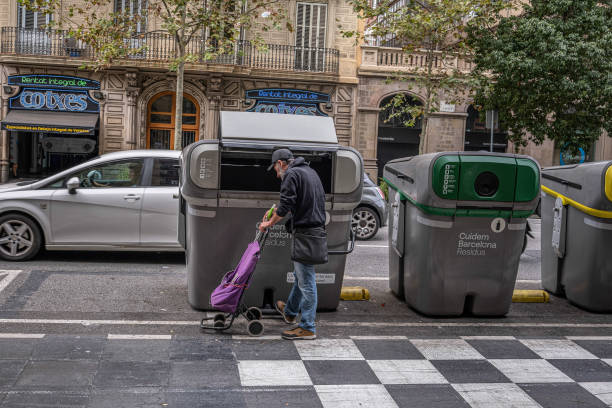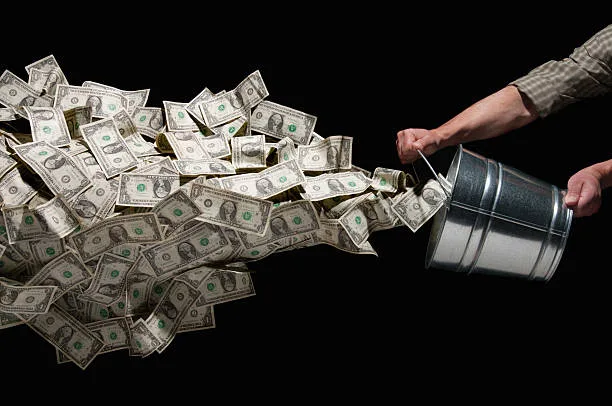Wealth From Waste-Making Opportunities Out of Garbage and Trash | 2023
Wealth From Waste

Finding creative solutions for garbage management has become crucial in a world that is battling issues like overconsumption, environmental damage, and resource depletion. The phrase “Wealth from Waste” encapsulates the concept of recycling waste products into useful resources in order to promote a sustainable and circular economy. This idea seeks to lessen environmental harm by reducing waste output, promoting recycling and upcycling, and generating economic opportunities.
Management Is Critical.
Management is a critical subject that requires quick attention and action. Population growth, fast industrialization, and unsustainable spending patterns have all contributed to an unprecedented increase in trash output worldwide. This growing threatens human health, ecosystems, and the world as a whole. Improper garbage disposal pollutes the air, water, and land, posing a variety of health risks such as respiratory disorders, contaminated water supplies, and disease transmission.

The magnitude of the garbage problem:-
Global garbage generation reached 2.01 billion metric tonnes in 2016 and is expected to climb to 3.4 billion metric tonnes by 2050, according to World Bank estimates. Inadequate waste management practises in many locations exacerbate the situation, resulting in environmental degradation, health concerns, and natural resource loss.
Improper garbage disposal, such as open dumping or burning, contributes to contamination of the air, land, and water. Plastics, in particular, have become a major concern due to their sluggish breakdown rate, resulting in plastic trash accumulating in landfills, seas, and other ecosystems.
Wealth from Waste is a concept:-

This is a concept centred on converting waste materials into useful resources. It recognises the potential contained within discarded or abandoned objects and strives to capitalise on that potential in order to provide economic, social, and environmental advantages.
The notion emphasises the significance of recycling, reusing, and repurposing resources in order to reduce garbage and maximise resource efficiency.
This strategy allows society to not only lessen the pressure on landfills, but also conserve natural resources, minimise pollution, and offer new economic opportunities.
The notion of money from garbage urges a shift in perspective, viewing garbage as a possible source of money and creativity rather than something to be discarded.
Adopting wealth-from-waste approaches has numerous benefits that go beyond environmental preservation. Here are some important benefits of adopting these practises:
Environmental Conservation:

Wealth from waste techniques help to conserve natural resources by diverting garbage from landfills and lowering the demand for raw material extraction. This contributes to the reduction of environmental deterioration, deforestation, and habitat damage caused by resource extraction.
Reduction and Recycling:
Using this solutions encourages trash reduction at the source as well as recycling. This reduces the amount of garbage disposed of in landfills, conserves landfill area, and reduces greenhouse gas emissions caused by waste decomposition.
Conservation of Energy and Resources:
Many riches from grabage programmes focus on recovering energy from unused products through methods such as anaerobic digestion or incineration. This utilises waste’s energy potential and lowers reliance on fossil fuels for energy production. Furthermore, recycling and upcycling products contribute to resource conservation by prolonging their lifespan and minimising the demand for new manufacturing.

Economic Opportunities and Job Creation:
The wealth generated by trash practises can help to build new industries and job opportunities. Recycling facilities, waste-to-energy plants, and upcycling businesses all demand professional labour, which creates job possibilities in trash management and allied industries. Furthermore, the selling of recycled or upcycled goods can generate cash and help local economies.
Technological advancement and innovation:-
Advances: Embracing this fosters innovation and the development of sophisticated waste management solutions. As a result, efficient recycling procedures, resource recovery techniques, and waste-to-energy systems are developed. Such breakthroughs propel forward and contribute to the general advancement of sustainable practises.

Community Participation and Social Benefits:-
Initiatives to generate wealth from garbage frequently require community participation, such as raising recycling awareness, organising clean-up campaigns, and supporting good trash management practises. These initiatives promote a sense of communal pride, awareness, and social responsibility, which leads to an overall improvement in quality of life.
Upcycling is the process of converting garbage into high-value items. Upcycling is a creative and imaginative strategy within the concept of wealth from waste that entails repurposing discarded materials into high-value goods with improved utility or aesthetic appeal. Unlike recycling, which deconstructs materials into their constituent parts, upcycling repurposes trash products in their current state, giving them new life. Here are some of the most important characteristics of upcycling and its function in converting garbage into high-value products:
Creativity and Innovation:

Upcycling promotes creative thinking and new design concepts. It entails rethinking the potential of wasted materials and finding new and unexpected ways to utilise them. Upcycling turns garbage into unique and useful products by thinking beyond the box.
Upcycling adds value to discarded materials by improving their functionality, durability, and aesthetic appeal. Upcycling creates high-value goods by repurposing and reworking discarded objects, which frequently have higher market appeal than the original resources. Because of their distinctiveness, craftsmanship, and sustainability, upcycled objects can be coveted.
Environmental Advantages:
Upcycling eliminates the need for fresh raw materials, reducing the environmental effect of resource extraction and production processes. We reduce the amount of energy, water, and natural resources needed to produce new things by upcycling discarded materials. This leads to waste reduction, resource conservation, and more sustainable material use.
Diversion:
Upcycling diverts from landfills or incineration, extending the life of disposal facilities and reducing the environmental impact caused by garbage accumulation. Instead of disposing items as trash, upcycling provides them a second life, keeping them from becoming a burden on the environment.
Artistic Expression and Design:

Upcycling allows artists, designers, and creative folks to showcase their ability and talents by repurposing waste materials into works of art or one-of-a-kind goods. Upcycled objects frequently display new design concepts, craftsmanship, and aesthetic appeal, transforming garbage into visually appealing and desired creations.
Local and Sustainable manufacture: Upcycling encourages local manufacture and environmentally friendly practises. It promotes the use of locally sourced waste materials, boosting community engagement and helping local businesses. Upcycling helps to make the economy more sustainable and resilient by reducing reliance on global supply networks and supporting local craftsmanship. Global वेस्ट-to-वेल्थ programmes are being expanded.
Scaling up waste-to-wealth programmes globally is critical for solving rising environmental concerns, fostering sustainable development, and moving to a circular economy. The following are significant strategies for expanding वेस्ट-to-वेल्थ programmes around the world broader sustainability policies.
Adequate infrastructure is required for the expansion of this programmes. This includes the construction of recycling centres, waste-to-energy plants, composting sites, and material recovery facilities. Governments and the business sector should invest in infrastructure development to accommodate the growing volume of garbage and to promote efficient waste conversion operations.
Transfer of Technology and Innovation:-

It is critical to encourage technology transfer and innovation in order to scale up efforts around the world. Governments, research institutes, and private-sector organisations should work together to create and share technology that allow for effective trash sorting, recycling, upcycling, and waste-to-energy conversion. This includes improvements in management equipment, recycling technology.
Public-Private Partnerships:-
Collaboration between the public and business sectors is critical for scaling up waste-to-wealth initiatives. Governments can collaborate with waste management firms, recycling sectors, and technology suppliers to use their expertise, resources, and networks. Public-private partnerships can improve the efficiency and effectiveness of waste management systems while also facilitating the spread of this practises.
Increasing public knowledge and education about the benefits of waste-to-wealth initiatives is critical for their widespread acceptance.
International Cooperation and Knowledge Exchange:-
Global collaboration and knowledge exchange are critical for expanding waste-to-wealth programmes. International organisations such as the United Nations Environment Programme (UNEP) and the World Bank can help to encourage knowledge sharing, promote best practises, and assist waste management capacity building activities. Forums, conferences, and online forums for exchanging experiences and lessons learned can help to expedite the global adoption of waste-to-wealth practises.

Strategies for a Circular Economy:
It is critical to incorporate this programmes into larger circular economy strategy. Governments and organisations should take a comprehensive strategy to garbage prevention, reuse, recycling, and resource recovery. This entails engineering items for recyclability, advocating extended producer responsibility, and encouraging collaboration across the entire value chain in order to close the material loop and reduce waste generation.
Financial assistance and investment:-
Adequate financial backing and investment are required to scale up waste-to-wealth initiatives globally. Governments, international funding agencies, and impact investors should give funds and resources to promote management infrastructure development, technology adoption, and capacity building. Financial incentives and grants can motivate enterprises to invest in recycle practises and support their expansion.
Sectoral and stakeholder collaboration:-

Collaboration between sectors and stakeholders is critical for programmes’ effectiveness and scalability. Collaborative efforts can drive innovation, overcome challenges, and maximise the impact practises by bringing together diverse actors such as government bodies, businesses, non-governmental organisations (NGOs), communities, and research institutions.
Here are some of the most important features of collaboration between sectors and stakeholders:

Partnerships with Multiple Stakeholders:-
Creating multi-stakeholder alliances is critical for successful wealth programmes. Government agencies, business companies, civil society organisations, universities, and local communities can all be involved in these collaborations. Stakeholders can build comprehensive waste management strategies, discuss best practises, and conduct cooperative initiatives by pooling their knowledge, skills, and resources.
Policy Alignment and Coherence:
Collaboration ensures that policies are consistent and aligned across industries. Governments must collaborate closely with businesses, non-governmental organisations, and other stakeholders to design waste management laws and regulations that encourage trash reduction, recycling, and resource recovery. Sectors can establish an enabling environment that encourages the practices and reduces barriers to their adoption by matching their goals and actions.

Sharing of Technology and Innovation:-
Collaboration promotes the exchange of technology and innovation. Research institutes, technology providers, and garbage management firms can work with governments and businesses to transfer and adapt proven trash sorting, recycling, and energy recovery technologies. Stakeholders can speed the implementation of effective this kind of solutions by sharing knowledge and skills.
Capacity and Knowledge Exchange:-
Collaboration helps parties to share information and create capability. Workshops, training programmes, and conferences can help stakeholders learn from one other’s experiences, share best practises, and increase skills and capacity in waste management and practices. This knowledge exchange contributes to a better understanding of the difficulties and opportunities associated with waste management.

Collaboration on Funding and Investment:-
Collaboration allows for collaborative finance and investment activities. Governments, development agencies, impact investors, and corporations can work together to pool funds, issue grants, and invest in वेस्ट-to-वेल्थ programme. Stakeholders may mobilise the necessary money for infrastructure development, technology adoption, and capacity building by combining financial assistance, assuring the scalability and sustainability of वेस्ट-to-वेल्थ programmes.
Engagement and Participation in the Community:-
Collaboration ensures community participation and engagement inवेस्ट-to-वेल्थ initiatives. Participating local communities in decision-making processes, awareness campaigns, and implementation activities provides a sense of ownership and long-term behaviour change.
Communities can provide vital insights, cultural knowledge, and grassroots initiatives to increase the overall impact of waste-to-wealth practices.
Evaluation and monitoring:-

Collaboration makes it easier to build monitoring and evaluation methods. Stakeholders can collaborate to create standard indicators, measurement frameworks, and reporting systems to analysis the impact and effectiveness of वेस्ट-to-वेल्थ projects. Regular monitoring and evaluation enable stakeholders to identify areas for improvement, measure progress, and share success stories, thereby increasing the scalability and replicability of वेस्ट-to-वेल्थ practises.
The riches from वेस्ट concept provides a possible road forward for addressing the growing waste management challenge while also producing economic and environmental benefits. Some of the primary ways that can transform trash into valuable resources are recycling, upcycling, energy recovery, and industrial symbiosis.
We can usher in a future when trash is no longer viewed as a problem but as a precious resource that contributes to a sustainable and thriving society by enacting supportive policies, technological developments, and universal knowledge.

FAQs:-
What is meant by Wealth from Waste ?
The idea of converting trash material in to valuable resources is called Wealth from Waste.
2.What are the main benifits of converting waste to valueable resources?
By converting garbage to valueable resources, we can help to protect Environment by reducing harmful gases such as CO2, Sulphur etc.
We can generate employment there by.
3.What are the disadvantages of Improper disposal of waste?
Due to improper disposal of garbage, it leads to pollution of water, soil ,air, oceans and other ecosystem.
Follow Our Digiknowledge.co.in Page for Latest update about Bikes, Cars, Sports, Government Policy and many more.




